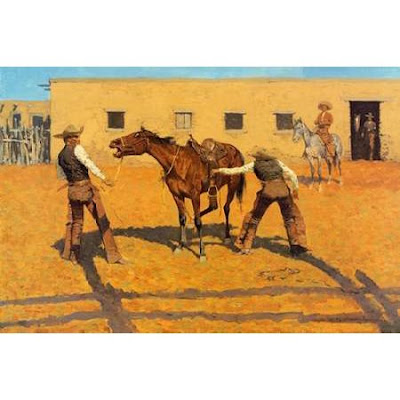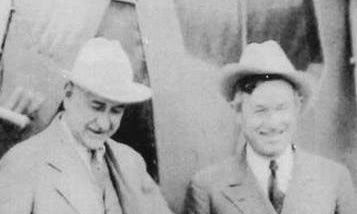We did not have a class last Thursday but were rewarded with an invite to participate with the active docents in a class today, Monday. The teacher was Dr. Laura Evans from North Texas University. Our class was about the fundamentals of art, elements and principles, what any artist professional or amateur needs to know. It does not matter if the creation is 2-D or 3-D or the style, the basics have to exist for the piece to work. A docent in an art museum can use the knowledge of these fundamentals to help guests really look at the art pieces. It is a thin line when using them as one does not want to have people's eyes roll back in their head from too much information at one time.
I cannot possibly write for you all that Dr. Evans has taken years to learn and the small part of her knowledge she taught us, but I can offer you a piece of art and ask you to analyse it using the list of elements and principles. Give it a go, it will be fun and who knows, you may learn a thing or two.
 |
| Wrapped Oranges - 1889 William J. McCloskey |
This painting is another wonderful piece in the Amon Carter Museum's collection http://www.cartermuseum.org/collection. Let's look at it using the fundamentals of art.
The Six Elements of Art:
Line - a line is a mark with a greater length than width. It can be curved or straight; horizontal or vertical or diagonal; thick or thin.
Shape - a closed line.
Form - a three dimensional shape expressing length, width, and depth.
Space - is the area between and around objects.
Color - a light reflected off of objects.
Texture - The surface quality that ca be seen and felt.
The elements of art are the building blocks used by artists to create a work of art. The principles of design describe the ways that artists use the elements of art in a work of art.
The Nine Principles of Design:
Balance - the distribution of the visual weight of objects, colors, texture, and space.
Emphasis - the part of the design that catches the viewers attention.
Movement - the path the viewer's eye takes through the work of art, often to focal areas.
Pattern - the repeating of an object or symbol all over the work of art.
Repetition - works with pattern to make the work of art seem active.
Proportion - the feeling of unity created when all parts relate well with each other.
Rhythm - is created when one or more elements of design are used repeatedly to create a feeling of organized movement.
Variety - is the use of several elements of design to hold the viewer's attention and to guide the viewer's eye through and around the work of art.
Unity - the feeling of harmony between all parts of the work of art, which creates a sense of completeness.
See how many elements and principles you can locate in Wrapped Oranges. This is not a test and I cannot see what you come up with unless you wish to comment.
Thursday the 1st of November we have regular class. I will let you know how it goes.
Until then,
Caroline

















